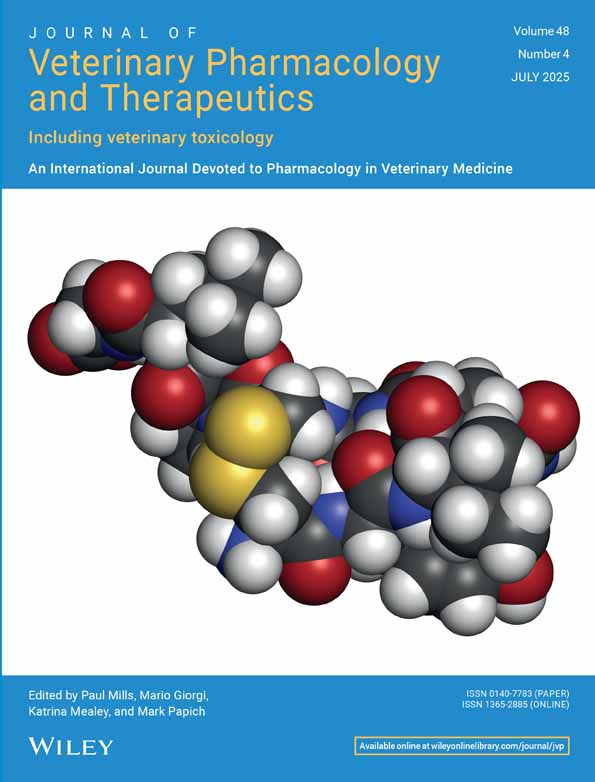Three compartment model for pyrimethamine disposition in the pig
Abstract
Plasma concentration and urine excretion of pyrimethamine (Py) after intravenous (i.v.) administration (10 mg/kg) were determined in four pigs, using NP-FID gas chromatography. A three-compartment model system adequately fitted the observed plasma data. Py may undergo an extensive extravascular distribution, because of the ratio of total volume of distribution to volume of the central compartment was extremely large (about 10). From the calculation of theoretical distribution, only 30% of the dose appears to remain in the central compartment 15 min after administration. Within 2 h of administration the proportion of drug within the two identified peripheral compartments exceeded the proportion remaining in the central compartment. Calculation of cumulative drug excretion showed that up to 90% of an administered dose is excreted within 24 h of administration, although only about 3% of the dose could be detected in urine in an unchanged form during the 24 h period.




